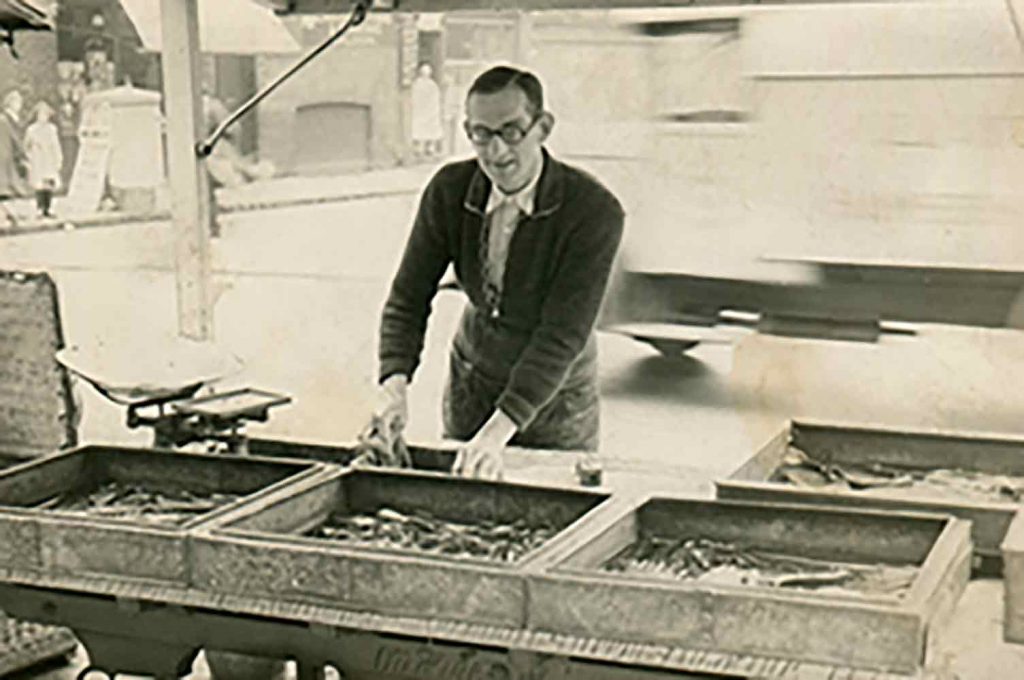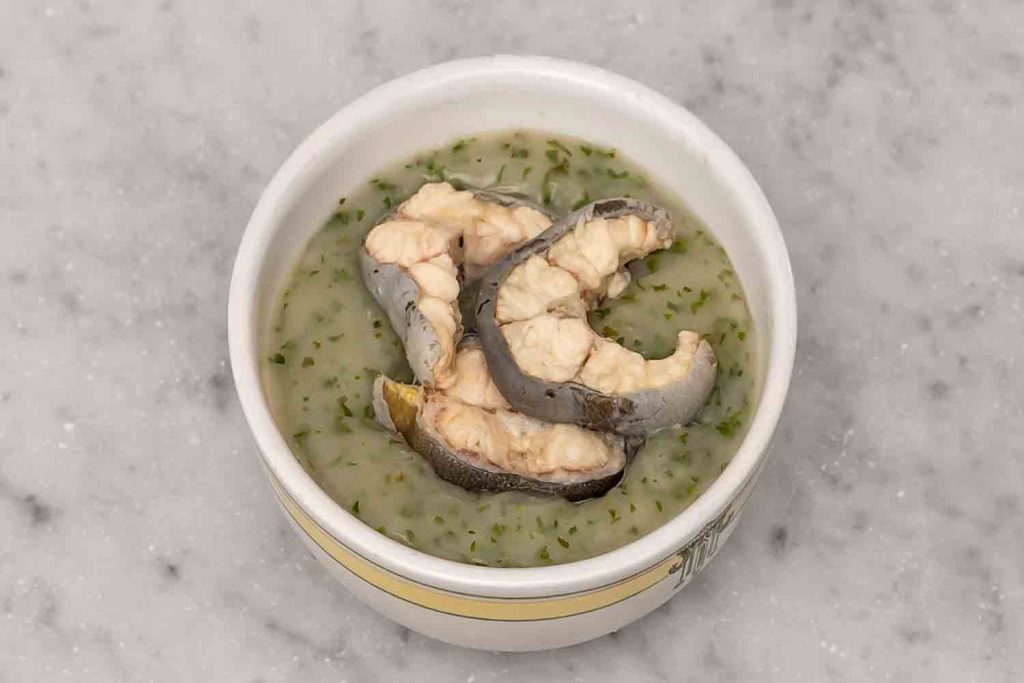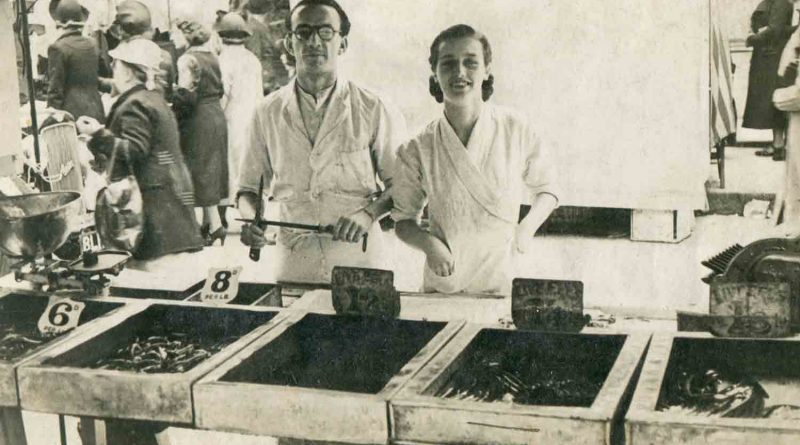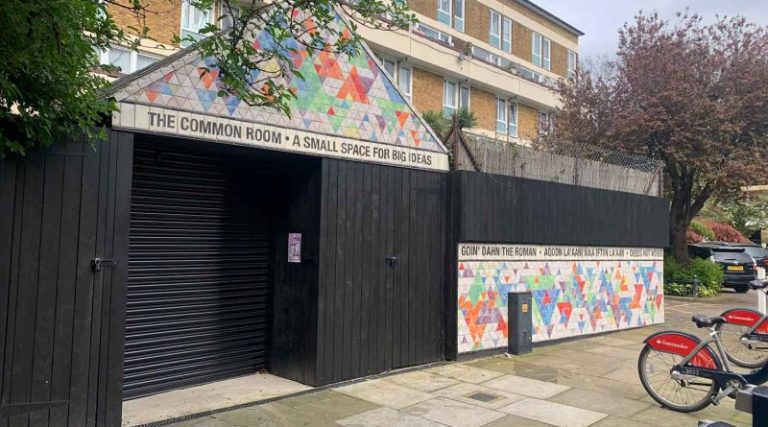Something Smells a Bit Fishy! Jellied Eels: The Quintessential Cockney Cuisine
The way to the heart of the East End is through its stomach. Are jellied eels the forgotten food of the East End or a snack that’s destined to make a comeback?
From Pie and Mash, Fish and Chips to Chicken Tikka Masala, the East End is well-known for its big appetite. Though these famous dishes are now enjoyed across the world, the origins of the cockney cuisine began with something lesser known and slightly more fishy.
Jellied eels, cockles and winkles once tantalised the taste buds of the ordinary East Ender looking for a quick, cheap and easy snack. Nowadays, such a food tradition is rare to come by, existing only in food spots hidden in the corners of East London.
Here we zoom back in time to uncover the history of the East End’s seafood obsession, whether it’s a long-lost pastime or destined to make a comeback on the food scene anytime soon.
History of Jellied Eels
It could be said that the roots of the cockney cuisine can be traced back to the sea. Freshwater eels may not sound appealing to most appetites but it’s a dish enjoyed in a variety of countries across the world, from Europe to East Asia. Here in the East End, it was once a staple ingredient which fed the hungry mouths of working people looking for a quick snack throughout their day.
According to food historians, the earliest eel shop is said to have opened in London in the 18th century. Eels during this time were abundant in the Thames and River Lea so could be sourced and caught locally.
Jellied eels alongside hot eels were often sold in eel stalls found on high streets, outside pubs and were abundant on a Saturday morning at Billingsgate Fish Market. On the Roman, you would find an eel stall outside G Kelly Pie & Mash shop.
According to nineteenth-century social historian Henry Mayhew, the commercial growth in London at this time inspired a certain entrepreneurial spirit in the East End. The eel trade introduced a way in which the local working class could cultivate small independent enterprises on the streets in which they lived and worked. Mayhew reported that the price of hot eels was a ‘halfpenny for five or seven pieces of fish and three parts of a cupful of liquor’.
As the eel craze grew in demand, local pie and mash shops began selling the dish, cementing it as staple East End grub.
Later in the twentieth century, eels spiked in popularity again during the Second World War. Throughout the rationing period, both hot and jellied eels provided cheap and easy nourishment to fill the empty stomachs of East Enders surviving through wartime. By the war’s end, London alone was home to approximately 100 eel-and-pie shops.
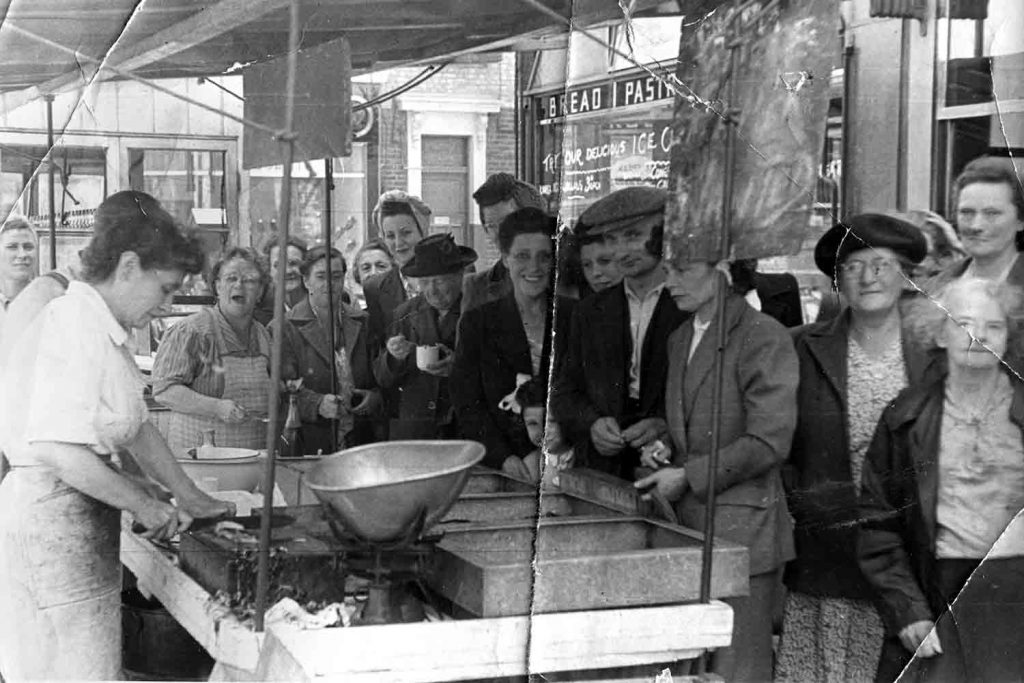
How to cook jellied eels
Traditionally, shopkeepers would prepare the East End’s favourite dish by chopping and boiling eels with vinegar, sliced onion, peppercorns, bay leaves, and salt for 20 mins.
Naturally gelatinous, the eels would cool to produce a savoury jelly that could be seasoned in vinegar and served with pie, mash and a heavy serving of liquor.
Alternative recipes recommend adding lemon, nutmeg and other spices to make a fish stock to flavour the hardened gelatin.
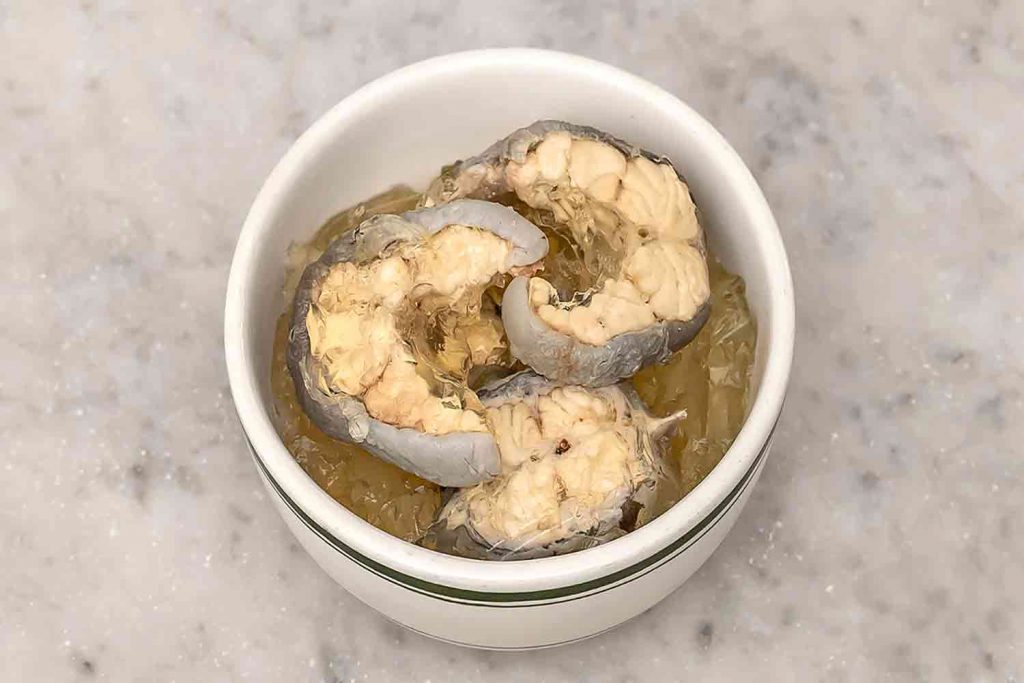
Where have all the eels gone?
As food trends and new cuisines grace through the ever-growing market of eateries popping up on the high streets, jellied eels have somewhat fallen off the radar. If not for their acquired taste, then for the death of their local source, the polluted River Thames. The dish once loved by the East End masses is now quite difficult to find.
Are jellied eels destined to make a comeback? In 2013, the Guardian reported a 35% increase in the sales of jellied eels in supermarkets, suggesting that the regional cockney cuisine had garnered the appetites of the nation.
Though jellied eels may have been a cheap and cheerful food item for those looking to cut costs on their weekly shop, their spike in sales was short-lived. In June 2013, legendary eel stall Tubby Issacs made its final sale and closed shop after ninety-four years of trading.
The dawn of Brexit and restrictions to international trading laws acted as a catalyst causing the eel market to plummet, taking centuries of a gelatinous food tradition down with it. The eel is now considered one of the world’s most trafficked animals. With the River Thames nothing but a giant open sewer, the nation’s dwindling rate of eel consumption is only slightly saved by imports from the Netherlands.
But the East End may not have completely lost its appetite for jellied eels just yet. Local spots such as BJ’s in Canning Town, Maureen’s in Poplar and G. Kelly right here on the Roman, are committed to keeping the jellied snack on their menu and they’re still in demand.
Eel, mash and dousing of liquor is a dish still craved by cockney old-timers seeking a taste of nostalgia. Alternatively, the obscure speciality has tempted a growing market of tourists eager to grab a novelty bite of the East End’s favourite dish.
Though you’re no longer able to bag a cup for a halfpenny, jellied eels remain on the cheaper end of the menu at your local Pie & Mash joint. The average price ranges from £4-£5 for 5 pieces.
Now, you may be more likely to find the culinary classic on the back of an Uber Eats bike than sold at an eel stall. Just as most pastimes have modernised to keep up with current trends, the jellied eel has adapted but remains a dish that’s loyal to its cockney roots.
If you enjoyed this article, check out more of our cockney content.
